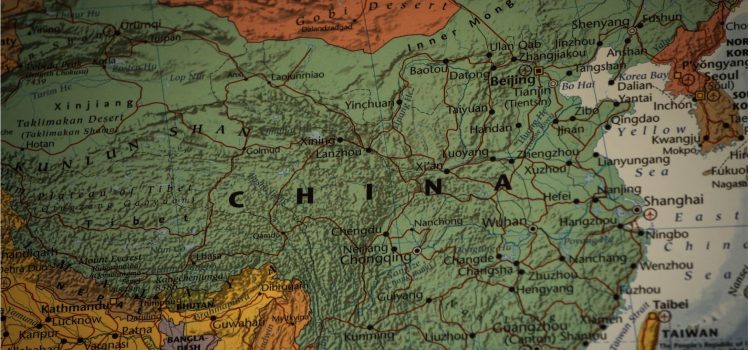

This article is an excerpt from the Shortform book guide to "Battlegrounds" by H. R. McMaster. Shortform has the world's best summaries and analyses of books you should be reading.
Like this article? Sign up for a free trial here.
What’s China’s vision for the world? How is China’s economic warfare being played out? What’s the risk to the rest of the world?
In Battlegrounds, General H. R. McMaster identifies five “hot spots”—points of conflict between the U.S. and other parts of the world. These are China, Russia, Afghanistan, the Middle East, and North Korea.
Keep reading for McMaster’s assessment of the growing threat of China, including China’s economic warfare.
The Growing Threat of China
Whereas Russia hearkens back to the relatively recent age of Soviet supremacy, the leaders of the Chinese Communist Party (CCP) are driven to return their nation to the era when China was the center of the world. CCP Chairman Xi Jinping is leading a primarily economic effort to shift global power back into China’s hands while promoting its authoritarian government model as an alternative to what Chinese leaders perceive as democracy’s weaknesses. In his discussion of the growing threat of China, McMaster describes China’s vision for the world and the three-pronged form of economic warfare it’s conducting to make that vision a reality.
While Mao Zedong’s Cultural Revolution did much to erase Chinese history, the CCP’s current leadership has gone to great lengths to embrace it—in particular, China’s imperial history in which neighboring countries were treated as subservient. In this interpretation, the period of domination by Europe and America is viewed as a historical hiccup that it’s China’s duty to correct. This message of natural Chinese superiority isn’t just directed at the outside world but is sold to the Chinese people as well, reinforced by China’s booming economy and held in place by social surveillance, lack of free speech, and repressive crackdowns on minority groups.
(Shortform note: Historically, China has had many imperial “golden ages” stretching back to at least 1600 BCE. It was during the four centuries of Han dynasty rule that much of Chinese ideology was developed and trade was established along the Silk Road to the West. Chinese self-rule was disrupted by the Mongols from 1271-1368. The last ruling dynasty, the Qing, weren’t ethnic Chinese at all, but rather members of the minority Manchu people. The Qing dynasty was severely weakened by the British during the Opium Wars, which left them vulnerable to overthrow by revolutionaries seeking a more modern form of government.)
China’s Economic Warfare
In order to transform China into the world’s economic axis, McMaster asserts that the CCP uses a combination of infrastructure spending, predatory lending, and industrial espionage to reach its goals. The Chinese government implements the first two of these strategies with the One Belt One Road (OBOR) initiative. OBOR funnels vast amounts of money into foreign infrastructure development, including improvements to ports and transportation by which imports and exports flow to and from China. These infrastructure projects come with many strings attached, such as high interest rates, political concessions, and bribes paid to high-ranking officials. McMaster argues that One Belt One Road becomes a form of economic colonialism that China then uses to elbow the U.S. and its allies out of world markets.
(Shortform note: In order to compete with One Belt One Road, the U.S. Congress passed the BUILD Act in 2018 and created the International Development Finance Corporation (DFC). Under the BUILD Act’s mandate, the DFC facilitates private sector investment and technical assistance in developing countries around the world. In 2022, the DFC dedicated over $7 billion to projects such as renewable energy development in Asia, farming in Africa, and protecting businesses and infrastructure in eastern Europe that were impacted by the war in Ukraine.)
Another arm of China’s economic warfare is the Military-Civil Fusion project, which enlists Chinese companies and citizens in the intelligence-gathering process. Through Military-Civil Fusion, the CCP appropriates foreign technology and intellectual property, which it uses to undercut foreign competitors and bolster China’s military capabilities. This process feeds into the Made in China 2025 program to establish tech monopolies inside the Chinese market.
(Shortform note: McMaster’s warnings on the topic of IP theft aren’t new. Every U.S. president since Ronald Reagan has attempted to halt China’s technological espionage, to no avail. Now, more private corporations have become well aware of China’s aggressive pursuit of intellectual property. In 2019, 20% of U.S. companies claimed their data was stolen by Chinese competitors. A cybercrime report in 2022 exposed a vast campaign of intellectual property theft by a state-sponsored group of Chinese nationals collectively known as APT 41.)
McMaster points out that China’s economy is now so large that outside companies, even those in the U.S., are financially coerced to not criticize the Chinese government—even in their home countries—in order to do business there.
(Shortform note: The American film industry serves as a case study for the CCP using its economic power to extend its censorship to the US. As China’s standard of living increased, its enormous film market became an essential source of income for many movie studios. In Red Carpet, Erich Schwartzel claims that because of their dependence on Chinese audiences, American studios deliberately avoid producing films on issues that would displease the CCP, such as protests in Hong Kong or China’s treatment of religious minorities. However, beginning in 2022, U.S. filmmakers began to push back against Chinese restrictions, producing high-profile films such as Top Gun: Maverick that weren’t expected to get past Chinese censors.)

———End of Preview———
Like what you just read? Read the rest of the world's best book summary and analysis of H. R. McMaster's "Battlegrounds" at Shortform.
Here's what you'll find in our full Battlegrounds summary:
- Why the U.S. has lost influence on the global stage
- The bad assumptions that cloud U.S. foreign policy
- Strategies the U.S. should adopt in order to help defend the free world






